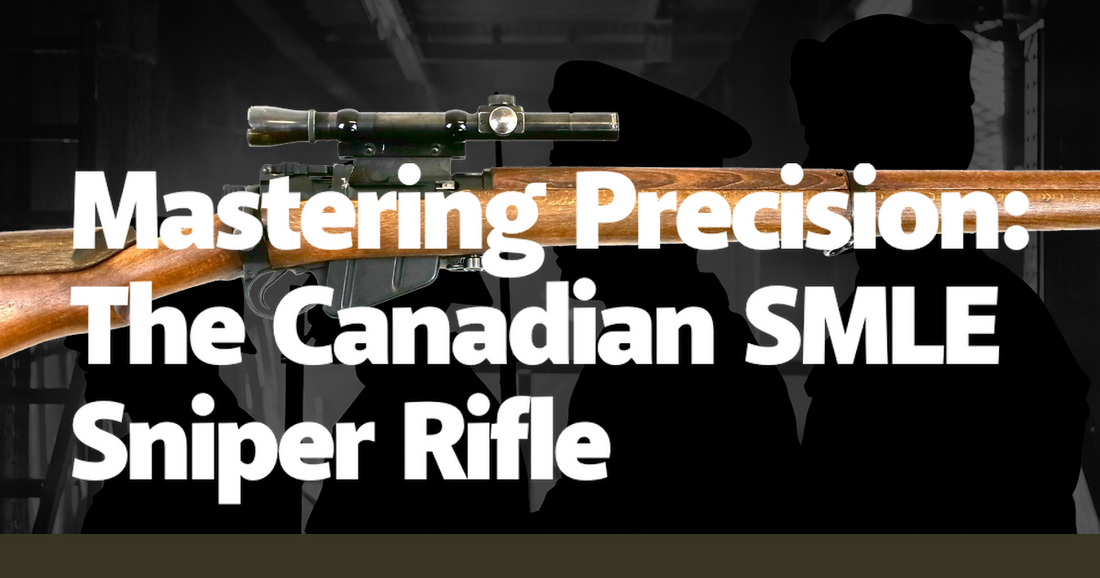In the annals of military history, few weapons have garnered the respect and admiration of both soldiers and historians like the Canadian Short Magazine Lee-Enfield (SMLE) sniper rifle. This venerable firearm, a variant of the British SMLE, earned its stripes in the hands of Canadian marksmen during both World Wars. Its reputation for precision and reliability was not merely a product of engineering but a testament to the skill and dedication of the soldiers who wielded it. The SMLE’s journey from a standard infantry rifle to a sniper's tool of unparalleled accuracy is a story of innovation, adaptation, and battlefield necessity.
The Canadian version of the SMLE, formally known as the No. 4 Mk I*(T), was a product of meticulous craftsmanship. Unlike its British counterpart, the Canadian SMLE was manufactured with a higher degree of precision, ensuring that each rifle met stringent accuracy standards. This was achieved through a combination of superior materials and exacting quality control processes at the Long Branch Arsenal in Ontario. The result was a rifle that could deliver consistent performance in the harshest conditions, from the muddy trenches of Flanders to the frigid forests of the Ardennes.
The transformation of the SMLE into a sniper rifle involved more than just mechanical tweaks. It required the addition of a high-quality telescopic sight, typically a No. 32 Mk I scope, which allowed snipers to engage targets at greater distances with remarkable accuracy. The scope was not merely an accessory but a vital component that had to be perfectly aligned with the rifle’s barrel. This painstaking process, known as "bedding," ensured that the rifle maintained its zero even after rough handling. The combination of a finely tuned rifle and a precision scope made the SMLE a formidable tool in the hands of a skilled marksman.
One of the most compelling aspects of the Canadian SMLE sniper rifle was its role in the evolution of sniper tactics. During World War I, snipers were often seen as rogue elements, operating independently behind enemy lines. By World War II, however, the role of the sniper had become more integrated into military strategy. Canadian snipers, armed with the SMLE, were deployed not just to eliminate high-value targets but also to gather intelligence and demoralize enemy troops. Their ability to deliver precise, long-range fire made them invaluable assets in both offensive and defensive operations.
The effectiveness of the Canadian SMLE sniper rifle was not solely a matter of hardware; it was also a reflection of the rigorous training programs implemented by the Canadian military. Snipers were selected from the ranks of experienced infantrymen and subjected to an intensive training regimen that emphasized marksmanship, camouflage, and fieldcraft. This training was designed to hone their skills to a razor’s edge, ensuring that they could exploit the full potential of their rifles. Stories abound of Canadian snipers achieving seemingly impossible shots, a testament to both their training and the capabilities of the SMLE.
Anecdotes from the battlefield further illustrate the impact of the Canadian SMLE sniper rifle. One such story involves Sergeant Harold Marshall, a Canadian sniper credited with over 20 confirmed kills during the Battle of Normandy. Armed with his trusty SMLE, Marshall was able to neutralize key German positions, allowing Canadian forces to advance with minimal casualties. His exploits became the stuff of legend, inspiring a new generation of snipers and cementing the SMLE’s reputation as a weapon of unparalleled precision.
The legacy of the Canadian SMLE sniper rifle extends beyond its wartime service. Even today, it is revered by military historians and firearms enthusiasts alike for its engineering excellence and historical significance. The rifle’s design has influenced modern sniper rifles, and its role in shaping sniper tactics is still studied in military academies around the world. The SMLE’s blend of reliability, accuracy, and adaptability serves as a benchmark against which other sniper rifles are measured.
In conclusion, mastering precision with the Canadian SMLE sniper rifle was a multifaceted endeavor that combined engineering prowess, rigorous training, and battlefield innovation. It was not just a weapon but a symbol of the skill and determination of Canadian snipers. From the trenches of World War I to the battlefields of World War II, the SMLE proved itself time and again as a tool of unparalleled accuracy and reliability. Its legacy continues to inspire and inform, a testament to the enduring power of precision in the art of war.

